
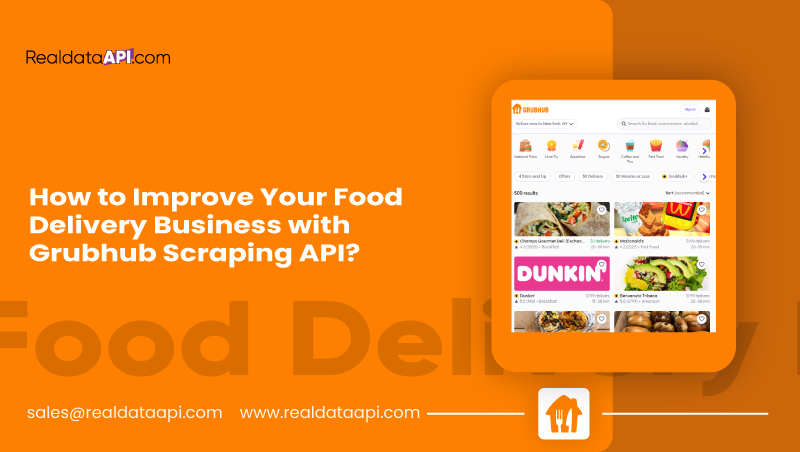
Introduction
In today's competitive landscape, businesses rely on data to catalyze growth and success. The ability to gather, analyze, and derive insights from real-time data has become crucial in making informed decisions and staying ahead in the market. This is particularly evident in industries like food delivery, where understanding market trends, conducting price comparisons, and performing market research are pivotal for success.
One transformative solution in this data-driven era is the Grubhub Scraping API. This powerful tool empowers businesses to scrape Grubhub data efficiently, unlocking a wealth of information from restaurant details to pricing structures. The Grubhub scraper, through web scraping services, facilitates the extraction of valuable data, providing businesses with a competitive edge.
In this landscape, the role of the Real Data API is pivotal. It acts as a bridge, seamlessly connecting businesses with the rich data on platforms like Grubhub. By leveraging the Real Data API, businesses can perform comprehensive market research, conduct thorough price comparisons, and refine their strategies for optimal outcomes.
The Grubhub Food Data Scraping API is one of the transformative solutions in this data-driven era. It is a powerful tool for businesses to scrape Grubhub data efficiently and unlock a great deal of information, starting from restaurant details to their pricing structures. Grubhub scraper, through web scraping services, makes extracting valuable data much easier for the business to give them a competitive edge. Grubhub Food Data Scraping allows the food businesses to have insights into menu items, prices, customer reviews, and much more for their betterment in optimizing offerings and staying competitive in the market.
The Power of Data in the Food Delivery Industry
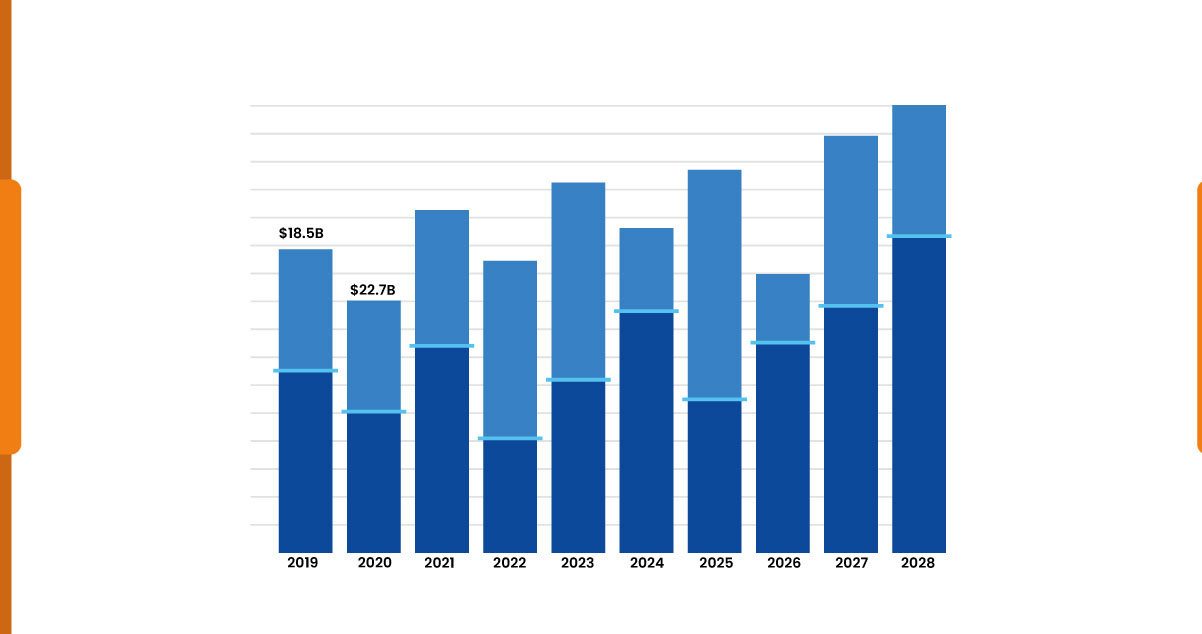
The power of data-driven insights cannot be overstated in the rapidly evolving landscape of the food delivery industry. Grubhub restaurant data scraping, facilitated by advanced web scraping services, has become a pivotal tool for businesses seeking to revolutionize decision-making.
Access to real-time data is paramount in navigating the challenges businesses face in the food delivery sector. The Grubhub scraper empowers businesses to scrape Grubhub data efficiently, enabling comprehensive market research and price comparison analysis. With this real-time data, businesses may be able to adapt to shifting consumer preferences, optimize pricing strategies, and stay competitive in the dynamic market.
Integrating web scraping services, mainly through the Grubhub scraper, equips businesses with the essential data-driven insights needed to make informed decisions and thrive in the competitive food delivery industry.
Understanding Grubhub Scraping API
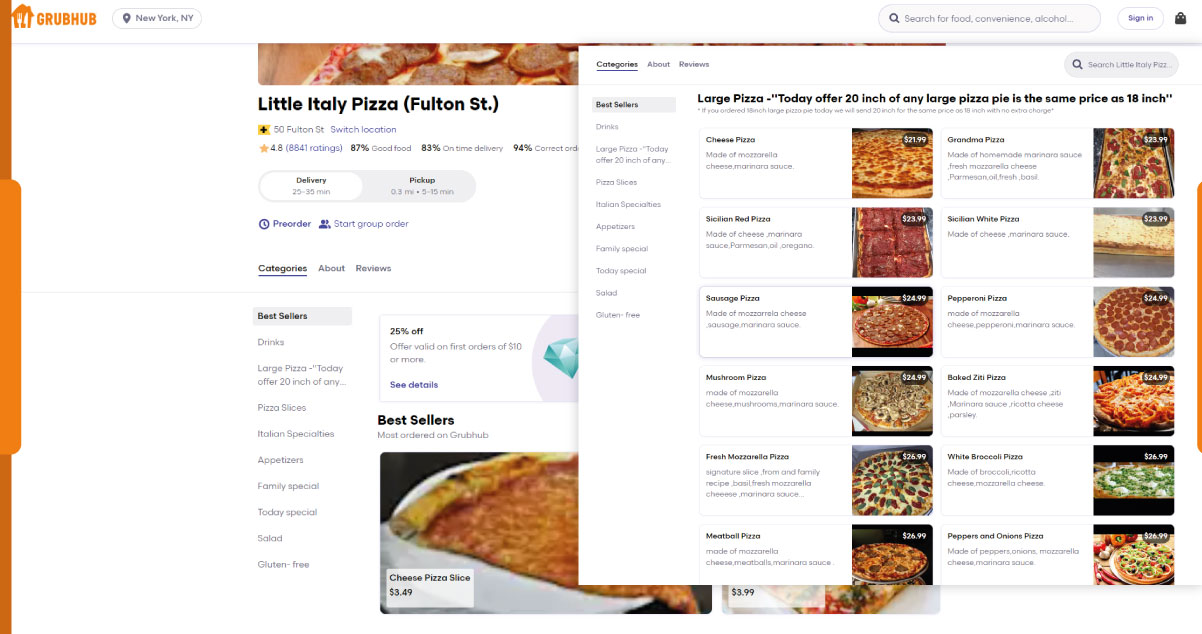
The Grubhub Scraping API is a powerful tool designed to extract data systematically from the Grubhub platform. A scraping API, or Application Programming Interface, serves as a bridge between different software applications, facilitating the extraction of specific data from websites or online platforms.
Operating on the principles of web scraping, the Grubhub Scraping API sends requests to the Grubhub server, mimicking user interactions to retrieve valuable information. By leveraging this API, businesses can automate the data extraction process, saving time and resources compared to manual methods.
Key features that make the Grubhub Scraping API invaluable for businesses include its efficiency in extracting detailed restaurant information, menu details, pricing structures, and other relevant data. The API provides a structured and organized output, ensuring that businesses receive accurate and usable information for analysis. Additionally, it offers customization options, allowing users to tailor their data extraction based on specific needs.
The Grubhub Scraping API empowers businesses with real-time data insights, enabling them to stay competitive, make informed decisions, and optimize strategies in the dynamic food delivery industry. Its user-friendly design and robust functionality make it an indispensable tool for extracting valuable information from Grubhub efficiently.
Key Business Use Cases
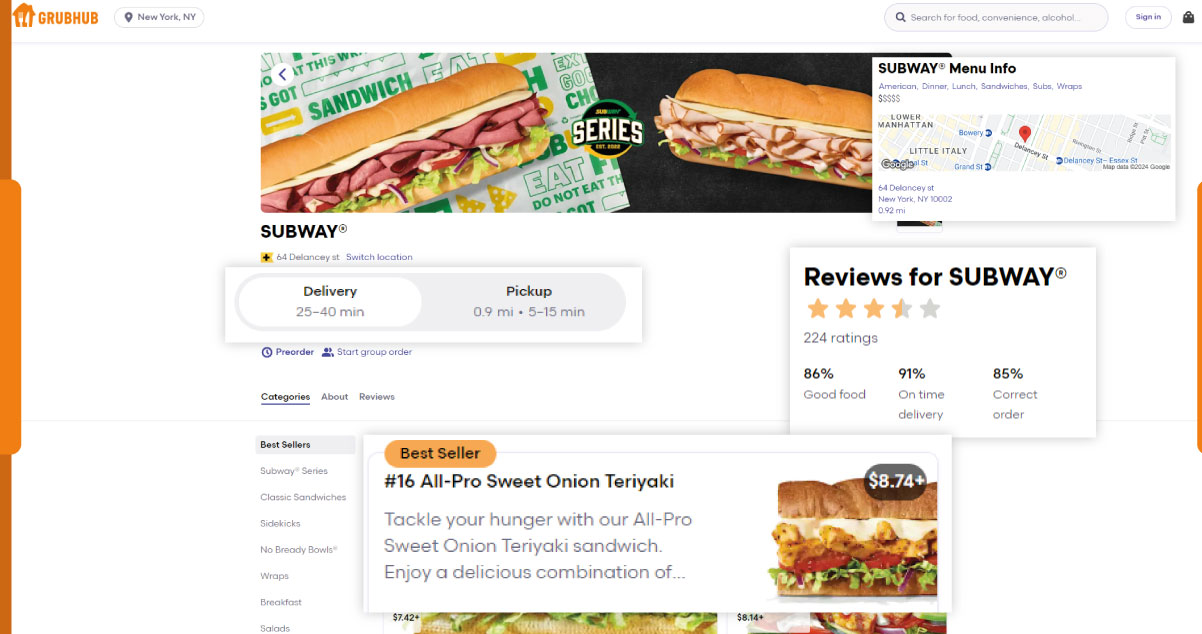
Businesses can leverage Grubhub scraped data in various impactful ways, unlocking valuable insights that contribute to strategic decision-making and competitive advantage.
Market Analysis
Scrutinize Grubhub scraped data to identify evolving consumer preferences and emerging trends in the food delivery market.
Geographic Expansion
Analyze data to pinpoint potential areas for market expansion and target new customer demographics.
Competitor Tracking
Monitor competitor offerings, pricing strategies, and customer reviews to benchmark against industry leaders and enhance business positioning.
Menu Differentiation
Utilize scraped data to identify gaps in competitor menus, enabling businesses to differentiate their offerings for a competitive edge.
Strategic Pricing Decisions
Implement dynamic pricing strategies by analyzing real-time data on competitors' pricing structures, promotions, and discounts.
Cost Optimization
Use scraped data to optimize pricing based on market demand, seasonal fluctuations, and competitor responses, ensuring competitiveness and profitability.
Customer Behavior Analysis
Leverage Grubhub scraped data to understand customer preferences, enabling personalized marketing campaigns and targeted promotions.
Order Customization
Analyze customer choices and preferences to tailor menus, enhancing customer experience and satisfaction.
Inventory Management
Utilize data on popular dishes and demand patterns to optimize inventory, reduce waste, and ensure efficient supply chain management.
Delivery Time Optimization
Analyze historical data to streamline delivery processes, minimize delivery times, and enhance customer satisfaction.
By tapping into Grubhub scraped data, businesses can comprehensively understand market dynamics, refine their strategies, and make data-driven decisions that contribute to sustained growth and success in the competitive food delivery industry.
Implementing Grubhub Scraping API
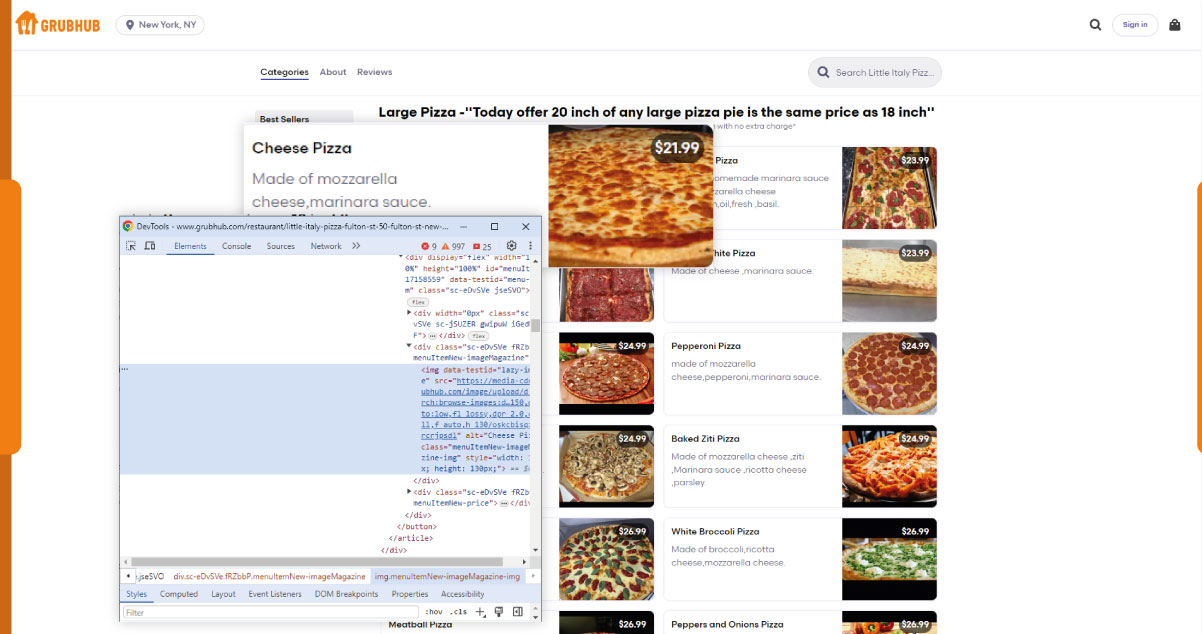
Step 1: Obtain API Access
Begin by acquiring access to the Grubhub Scraping API. Contact the provider or visit their website for the credentials and API key.
Step 2: Set Up Environment
Create a development environment suitable for web scraping. Ensure compatibility with the programming language you'll be using for integration.
Step 3: Understand API Endpoints
Explore the available API endpoints for Grubhub restaurant data scraping. Identify specific endpoints relevant to your business requirements, such as menu details or pricing structures.
Step 4: Authentication
Implement secure authentication using the provided API key to ensure authorized access to Grubhub's data.
Step 5: Make API Requests
Leverage your chosen programming language to request HTTP to the Grubhub Scraping API. Customize requests based on your intended data extraction, like price comparison or market research.
Step 6: Data Parsing and Storage
Receive and parse the data returned by the API. Store the extracted information in a structured format suitable for further analysis or integration into your systems.
Step 7: Error Handling
Implement robust error-handling mechanisms to address issues arising during the data scraping process. This ensures the reliability of your integration.
Step 8: Periodic Updates
Set up a system for periodic updates to keep your data current. Regularly retrieve and refresh Grubhub data to maintain relevance in your market analysis or pricing decisions.
Customization Options and Parameters
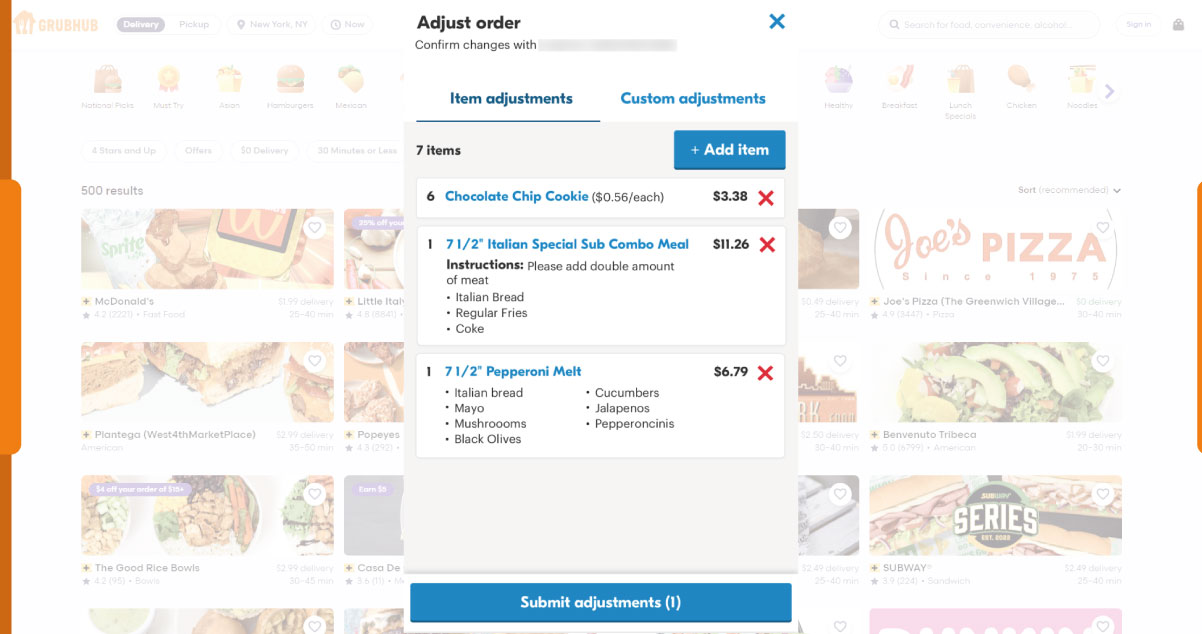
Explore customization options provided by the Grubhub Scraping API. Tailor your requests with parameters to refine data extraction, focusing on specific restaurants, menu items, or pricing details. This flexibility enhances the adaptability of the API to your unique business needs.
By following these steps and utilizing customization options, businesses can seamlessly integrate the Grubhub Scraping API, unlocking valuable insights for price comparison, market research, and other strategic decisions in the food delivery industry.
Real-world Success Stories
1. Streamlining Operations for a Local Eatery
A local restaurant leveraged our Grubhub restaurant data scraping to analyze customer preferences, optimize its menu, and enhance inventory management. With insights gained through web scraping services, the eatery improved operational efficiency, reducing waste and boosting overall profitability.
2. Elevating Customer Satisfaction Through Personalization
A nationwide food chain utilized our Grubhub scraper to scrape Grubhub data and understand regional preferences. Armed with this information, they personalized their menu offerings for different locations, leading to heightened customer satisfaction and increased order volumes.
3. Strategic Price Adjustments for a Global Franchise
An international restaurant franchise employed our Grubhub Scraping API for price comparison and market research. The franchise strategically adjusted its prices by analyzing competitor pricing structures, remaining competitive in diverse markets, and securing a more substantial foothold globally.
4. Enhancing Marketing Strategies Through Data Insights
A food delivery aggregator harnessed our Grubhub scraper to extract valuable market insights. The data facilitated targeted marketing campaigns, reaching specific demographics with tailored promotions. This approach increased customer engagement and a notable surge in order numbers.
5. Maximizing Profits with Informed Inventory Management
A catering business utilized our Grubhub Scraping API to scrape Grubhub data for menu popularity and pricing trends. This real-time data enabled precise inventory management, preventing shortages, reducing waste, and maximizing profits.
These success stories illustrate how local and global businesses have strategically employed Grubhub scraped data to improve their operations, enhance customer satisfaction, and drive profitability. Applying our web scraping services and the Grubhub scraper has proven invaluable in shaping data-driven decisions that directly impact the success of diverse businesses in the food delivery industry.
Overcoming Challenges and Best Practices
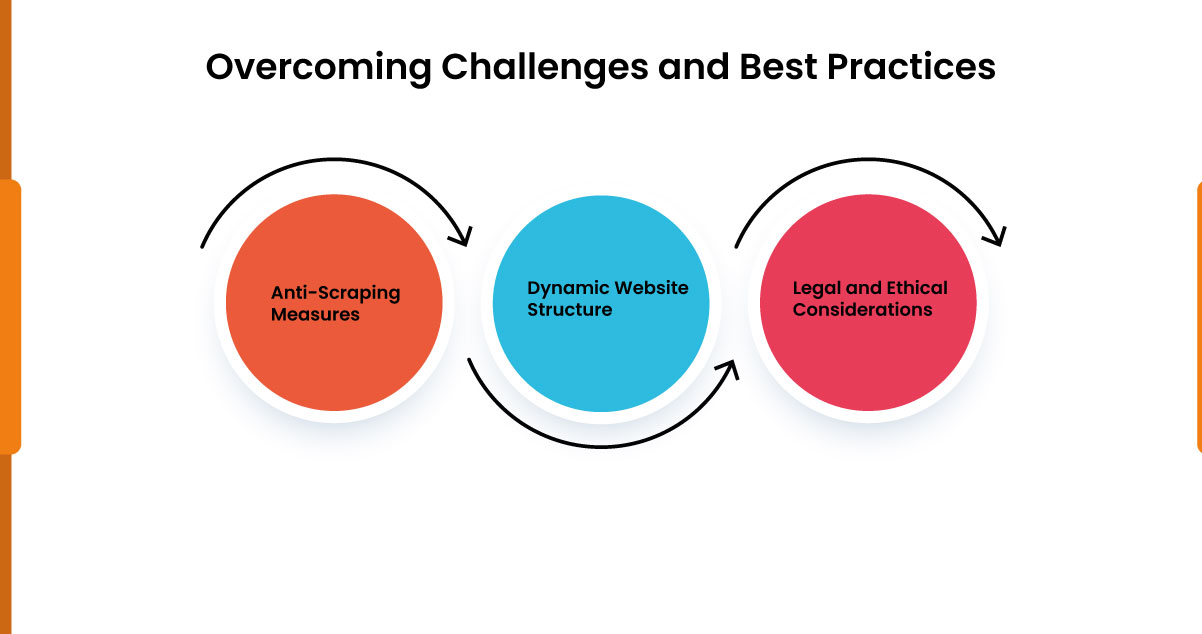
Challenges in Grubhub Restaurant Data Scraping:
Anti-Scraping Measures
Grubhub may employ anti-scraping measures to protect its data. Implement techniques such as IP rotation and user-agent rotation to mitigate detection risks.
Dynamic Website Structure
Frequent updates to Grubhub's website may lead to changes in its structure. Regularly check and update scraping scripts to adapt to any modifications.
Legal and Ethical Considerations
Respect Grubhub's terms of service and legal guidelines. Unauthorized scraping can lead to legal consequences and damage the reputation of your business.
Best Practices for Efficient and Ethical Grubhub Scraping
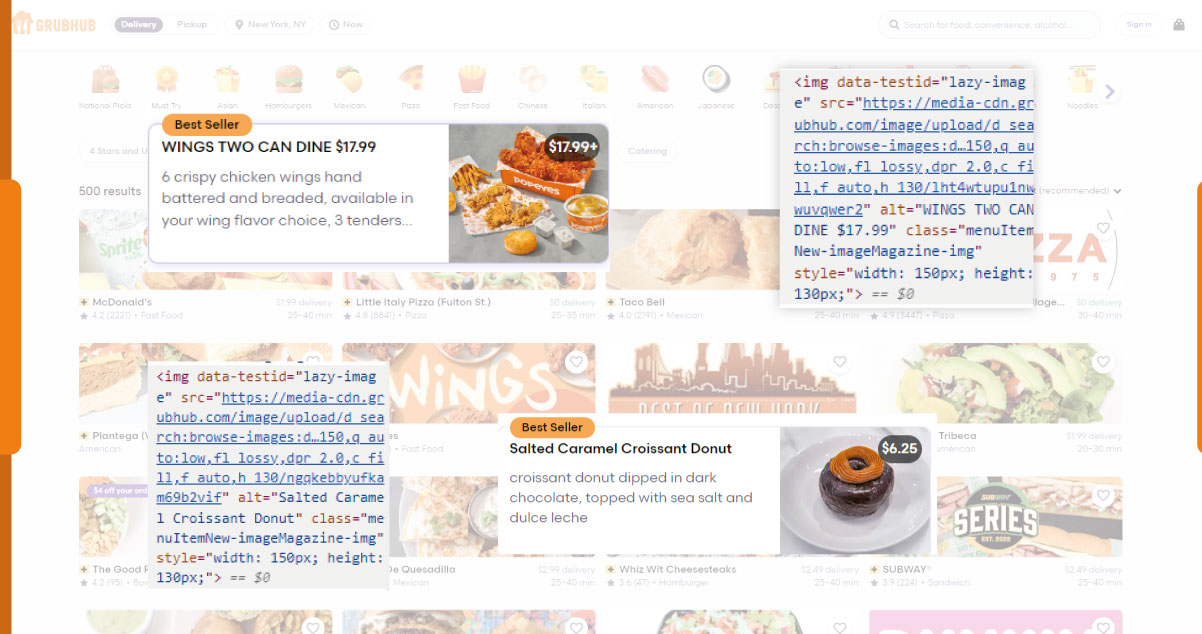
Use Proxies and Rotations
Employ a proxy server to prevent IP bans and rotate user agents to mimic human behavior, reducing the likelihood of detection.
Stay Informed About Website Changes
Regularly monitor Grubhub's website for any structural changes. Being proactive allows for swift adjustments to scraping scripts.
Limit Scraping Frequency
Avoid overwhelming Grubhub's servers by limiting scraping frequency. Abide by rate limits to ensure ethical use and maintain a positive relationship.
Respect Robots.txt
Review and respect Grubhub's robots.txt file, which indicates areas where scraping is allowed or restricted. Adhering to these guidelines is crucial for ethical scraping.
Monitor Legal Guidelines
Stay informed about legal guidelines surrounding web scraping. Adhering to ethical practices is not only a best practice but also a legal requirement.
Optimize Scraping Scripts
Write efficient scraping scripts to minimize your servers and Grubhub's load. Optimize code for speed and resource usage.
By acknowledging and addressing these challenges and adhering to best practices, businesses can ensure a smooth and ethical Grubhub data scraping experience. This approach safeguards against potential issues and promotes a responsible and sustainable use of web scraping services for price comparison, market research, and other strategic initiatives.
Conclusion
The transformative potential of the Grubhub Scraping API, complemented by the Real Data API, is evident in its ability to revolutionize how businesses operate in the food delivery industry. By facilitating Grubhub restaurant data scraping, businesses gain invaluable insights for price comparison, market research, and strategic decision-making. We encourage businesses to harness the power of web scraping services, particularly the Grubhub scraper, to unlock the full potential of real-time data. Embrace this technology for informed decisions and sustainable growth, ensuring your place at the forefront of the dynamic and competitive food delivery landscape.















